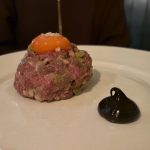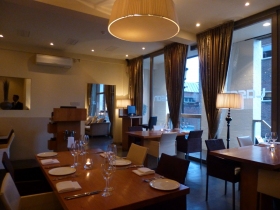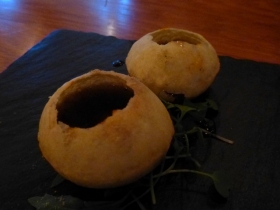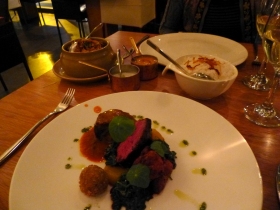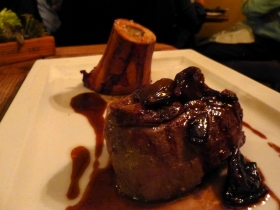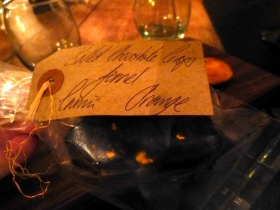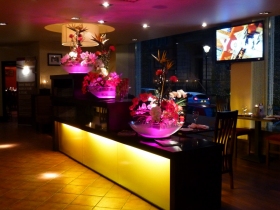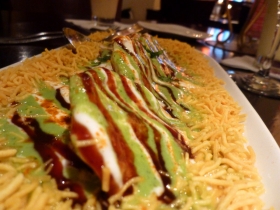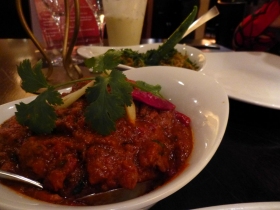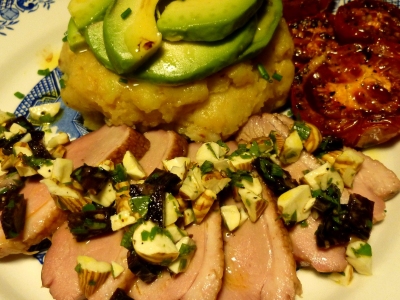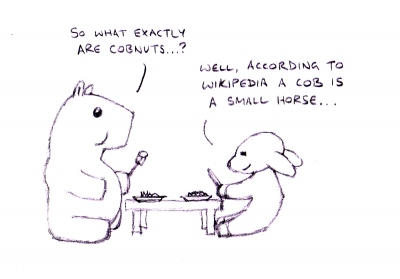I haven’t posted a blog in a couple of months now. But I very much haven’t stopped blogging, I’ve just paused. We’ve moved house. As usual, that has involved lots of things going into boxes and coming out of boxes, and lots of other boxes being stacked in one room, then moved to another. There’s lots of paint tins everywhere, and dust sheets and there are many, many trips out in search of curtains and wardrobes and chests of drawers and everything else.
It’s just a priority thing. I haven’t stopped eating, I just haven’t found time to write about it!
So we’re in Cheltenham now. Managed to squeeze in two last lunches at The Green Cafe in Ludlow before we left. I’d eat there every day.
In Cheltenham we’ve tried a half-dozen local restaurants and haven’t yet found our new local favourite. There was a bistro on Suffolk Road where the service was glacial and the pairing of fruit and monkfish a bit of a misfire. A brasserie in Montpelier, beloved of many locals (the only place busy on a Sunday night) but pretty average. Our nearest deli/cafe is a daft. Oh, the coffee is okay… just… and the cinnamon buns are awesome but everything else, from sandwiches and brunches to the goods on offer in the deli, is just terrifically overpriced. They stock my favourite coffee roaster (Grumpy Mule!) but how can they put £6.25 on the label when five minutes walk away the local organic grocer has it for the correct RRP of £4.25?!?
The good folk of Cheltenham seem particularly keen on TripAdvisor, and are so enchanted by the eateries in town that the first two pages of results are pretty much all 5 stars. I was delighted to find that the coffee shop I’d pass on my morning ramble to the train station served such superb coffee! Except they don’t. And I suffered two cups just to make sure. Funnily enough, it might be okay to drink in, but there’s just that irresistable temptation to fill the bloody paper cup up to the brim with hot milk, isn’t there?
There are good things. Purslane is an awesome little seafood restaurant, top class and especially at the prices they’re charging. Prithvi is a jolly good Indian, though it’s stretching somewhat to describe them as modern; ultimately it’s still meat with spicy sauce. Both of these are a fifteen minute walk.
I hope to get back to the blog soon. This isn’t a post, it’s just stream-of-consciousness. But Le Champignon Sauvage is booked for next Saturday, with a chance to redeem themselves after a lacklustre meal we had several years ago, and we’ve got Nathan Outlaw in February!



